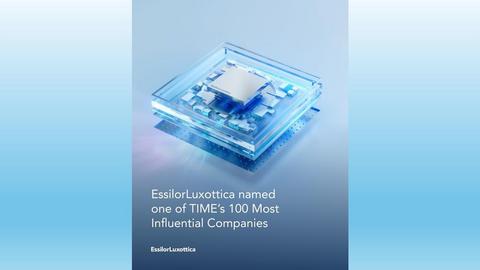Companies news
IPHUB ASIA: What can be registered as a trademark?

As per the Singapore Trademark Act (Cap. 332, 2005 Rev. Ed.), a trademark is defined as “any sign which is capable of being represented graphically and which is capable of distinguishing goods or services dealt with or provided in the course of trade by a person from goods or services so dealt with or provided by any other person.” The Act defines further the word “sign” as “any letter, word, name, signature, numeral, device, brand, heading, label, ticket, shape, colour, aspect of packaging or combination thereof”, a list that is not exhaustive.
Non-traditional trademarks in Singapore
So what can be registered as a trademark in Singapore? There are “classic” trademarks such as words, names, or devices, but there are also trademarks of a new generation called non-conventional or non-traditional trademarks.
Businesses are more and more associated with sounds, smells, or animations. For example, any iPhone user will definitely associate the ringtone called “Opening” with his device. Think of the classic MGM film intro with Leo the Lion, its first mascot, and its roar commonly associated with the studio. Or Intel’s five-note mnemonic, one of the most recognisable sounds, played every five minutes in the world. These tunes, jingles and sounds can be protected under Singapore’s trademark law.
Here are some of those non-traditional trademarks that can be registered in Singapore:
1. 3D shapes
This is an example of a 3D trademark that has been accepted for registration in Singapore in class 3 for goods such as perfumery:. It is important to note that a shape trademark is not registrable if the essential features of that shape are functional or attributable only to the technical result. Furthermore, shapes that are common to the trade are not registrable either. Multiple views of the shape mark should be submitted when filing the trademark application if it cannot be captured from a single perspective view. And if there are parts that are not claimed to constitute the trademark, they need to be shown in broken lines unless the description of the mark is clear enough.
2. Aspect of packaging
Trademark owners often forget that packaging such as registered in Singapore since 2015 in relation to “Coffee, candy, confectionery”, can obtain trademark protection. Unique and innovative packaging indeed deserves trademark protection as it will attract consumers’ attention and increase brand recognition.
3. Colours
A colour can be registered as a trademark and as such, if a company uses a colour or a very distinctive combination of colours, applying for registration of a colour mark should also be considered. For example, 7-Eleven Inc. has registered a trademark that consists of three horizontal stripes in the colours orange, green and red, which reflects their iconic colours:. When filing the trademark application, a visual representation of the color is required and it is recommended to add a designation from a recognised identification code such as Pantone.
4. Sounds
Sound trademarks have the advantage of being easily graphically represented, like this mark which has been registered in 2018 in the name of Nokia Corporation in class 9. A written description of the mark should be stated in the application form to define all the details of the sound mark (such as a particular instrument that is used).
5. Scents
Scent marks are, in theory, acceptable in Singapore. They are, however, difficult to be represented graphically and applications, to be acceptable, must include a clear and concise description of the scent. So far, no graphical representation for scents marks has been accepted by the Intellectual Property Office of Singapore (IPOS).
6. Holograms
A hologram is several images from several perspectives combined to display a three-dimensional image. It is difficult to graphically represent holograms but when filing such a trademark, the applicant needs to submit a representation of each view of the hologram when it moves. Those trademarks are more suitable for social media and the Internet, and help brands embrace technological changes.
7. Sequences or motions
Like holograms, an application for a sequence or motion mark must contain a graphical representation of the mark. The mark applied for should be graphically represented by a series of still images in the correct sequence of movement and the movement should be perceivable. In addition, a written description of the mark should be included in the application. Here is an example of a motion trademark registered in Singapore since June 2018:
The current situation regarding non-traditional trademarks in Southeast Asia

What about the situation in Southeast Asian jurisdictions, and what are the marks that are accepted here? Given below is a brief summary of the current situation.
What is the popularity and the future of non-conventional trademarks?
Non-conventional marks would need to go through a standard examination process, like any other trademark, and it could be more challenging to obtain registration for those marks than for “classic” trademarks.
The first challenge is the difficulty in graphically representing the marks (for example, the scents), which is one of the requirements for trademark protection. Another difficulty is establishing the distinctiveness of the marks. This might be the reason why there has been no rush of companies registering non-traditional marks. However, trademarks’ owners should not be discouraged from filing their non-traditional marks.
It has indeed been proven that non-conventional trademarks such as smells or sounds create a strong psychological impact on consumers. And, being able to get protection for those marks would justify the heavy investment in marketing and communication that trademarks’ owners would need to make, to strengthen their marks. In any case, rapid technological advancements will inevitably push for a favorable trend of registration of non-traditional trademarks and I believe it is only a question of time before the number of applications increases substantially.
If you are considering filing “classic” or non-traditional trademarks in Singapore and Southeast Asia, do get in touch.
You can also visit our website to know more about what we do and the services we offer.


